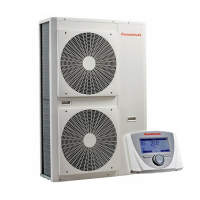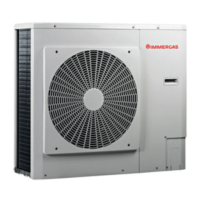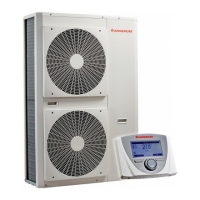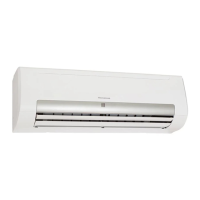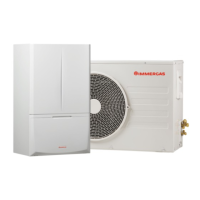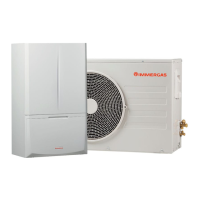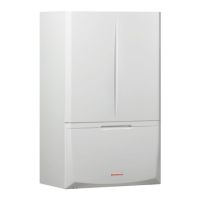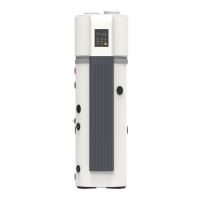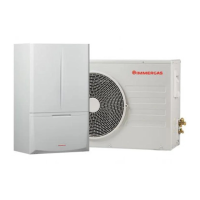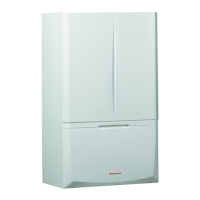16
2.2.4 Checks to be performed before
starting the system.
Before starting the system, check that it, includ-
ing the chiller unit, has been installed following
the instructions on the installation diagrams,
dimensional drawings, diagrams related to the
piping and instrumentation of the system as well
as on the wiring diagrams.
To perform these checks, you must strictly follow
the regulations in force on the national terri-
tory. If the national regulations do not contain
the relevant details, refer to EN 378 / ISO5149
as follows:
External visual checks to be performed:
• Make sure that the machine is charged with
coolant. Check on the unit plate that the “car-
ried uid” is R-410A and not nitrogen.
• Compare the complete system with the cooling
system and power supply circuit diagrams.
• Make sure that all components comply with the
design specications.
• Make sure that all documents and protection
devices provided by the manufacturer (dimen-
sional diagrams, piping and instrumentation
diagrams (P&ID), declarations, etc.) are pre-
sent, in order to comply with the applicable
regulations and standards.
• Make sure that all devices and systems for
the safety and protection of the environment
provided by the manufacturer are eectively
installed in compliance with current regula-
tions.
• Check that all documents relating to pressure
vessels, certificates, papers to be kept and
manuals provided by the manufacturer comply
with current regulations.
• Ensure the actual presence of all free spaces
required for service, maintenance and safety.
• Monitor compliance with all directives relating
to the prevention of the intentional removal of
refrigerant gases.
• Verify the installation of connections.
• Check the supports and xing elements (ma-
terials, routing and connection).
• Check the quality of welds and of other joints.
• Check the protection against mechanical dam-
ages.
• Check the protection against heat.
• Check the protection of moving parts.
• Verify accessibility for maintenance or repair
and check the piping.
• Check the state of the valves.
• Check the quality of the thermal insulation and
steam barriers.
2.3 HYDRAULIC CONNECTIONS.
For the dimensions and locations of the water
inlet/outlet hydraulic connections, refer to the
dimensional drawings provided with the unit.
e pipes must not transmit vibrations nor radial
or axial stress to the heat exchanger.
It will be necessary to analyse the supplied water
and provide appropriate ltration, treatment and
control devices, integrating the closing valves,
purge valves and circuits designed to avoid the
risk of corrosion (e.g.: damage to the pipe surface
protection if the uid is polluted), fouling and
deterioration of the pump ttings.
Before start-up, verify that the heat exchanger
uid is compatible with the materials and coating
of the hydraulic circuit.
When using additives or uids other than those
recommended by the manufacturer, make sure
that the uids are not considered as gaseous
substances, and that they are class 2, as dened
in Directive 97/23/CE.
Recommendations on heat exchange uids:
• e water used must not contain ammonia ions
NH
4+
as they are very damaging for copper. e
absence of such ions is the key factor for the
duration of the copper pipes. Over time, even
a few tenths of mg/l of this ion can cause severe
corrosion phenomena on the copper parts.
• Even chlorine ions Cl
-
have harmful eects on
copper, since they involve the risk of perfora-
tion caused by pitting corrosion. Possibly keep
them below 10 mg/l.
• Sulphate ions SO
4
2-
can cause pitting corrosion
if their content is above 30 mg/l.
• Absence of uoride ions (<0.1 mg/l).
• If the dissolved oxygen content in the water is
not negligible, there must be no iron ions Fe
2+
and Fe
3+
. e maximum content of dissolved
iron must be < 5 mg/l with a dissolved oxygen
content < 5 mg/l.
• Dissolved silicon: silicon is an acid element of
the water that can also cause risk of corrosion.
Content < 1mg/l.
• Water hardness: > 0.5 mmol/l. We recommend
keeping the values between 1 and 2.5 mmol/l.
is facilitates the formation of a scale deposit
that can limit copper corrosion. With the pass-
ing of time, too high values of water hardness
may cause the pipes to clog. It is desirable for
the complete alkalimetric title (CAT) to be less
than 100.
• Dissolved oxygen: Avoid any sudden change
in water oxygenation conditions. e water
de-oxygenation obtained by mixing with an
inert gas, is equally dangerous for its hyper-
oxygenation obtained by introducing pure
oxygen. e disturbance of the oxygenation
conditions favours the destabilisation of the
copper hydroxides and the increase in size of
the particles present.
• Electrical conductivity: 0,001-0,06 S/m (10-600
µS/cm).
• pH: Ideal case neutral pH at 20-25°C (7 < pH
< 8).
Attention: the charge, addition or drainage
of uid from the hydraulic circuit must be
performed by qualied personnel, through
the use of vents and materials suitable to the
products. e hydraulic circuit charging de-
vices are customised.
e charge and removal of the heat exchange
uids must be carried out through the use
of devices preliminarily assembled on the
hydraulic circuit by the installer. Never use
the unit heat exchangers to add uid for the
heat exchange.
Attention: it is forbidden to use the unit in an
open circuit.
2.3.1 Recommendations and precautions on
use.
e hydraulic circuits must be designed so as
to have the lowest number of bends possible
and avoiding siphoning of the pipes as much as
possible. e following are the main precautions
to be taken to make the connections: Observe
the input and output indications axed on the
hydraulic connections of the unit.
• Respect the water inlet/outlet connections
indicated on the unit.
• Install manual or automatic vent valves on all
high points of the circuit.
• Use a pressure reducer to maintain a stable
pressure inside the circuit(s) and install a
discharge valve and an expansion vessel if the
one present inside the machine is not enough.
• Install thermometers on the water inlet and
outlet pipes.
• Install discharge connections at all low points
to allow purging the circuit.
• Install stop valves near the water inlet and
outlet pipes.
• Use exible ttings to reduce the transmission
of vibrations.
• Aer verifying that there are no leaks, insulate
all pipes to both reduce heat losses and prevent
condensation.
• Wrap the insulation in a demisting screen.
• If the water pipes are located in an area where
there is a probability that the ambient tempera-
ture falls below 0°C, they must be protected
from frost (anti-freeze solution or electrical
resistance heaters).
• e use of various metals on hydraulic pipes
could generate electrolytic couples and, con-
sequently, corrosion. erefore, check for the
need to install sacricial anodes.
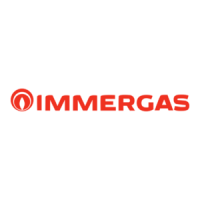
